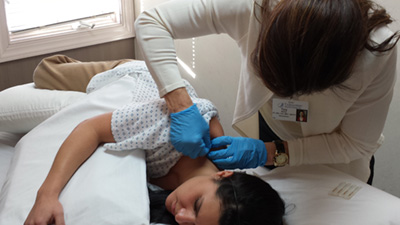 Years ago, while attending a continuing education course, an instructor literally told me about a tiny little muscle above the Patella that I’d never heard of. Even when he showed us, I still had to go home and pull out some old anatomy books from physical therapy school to see how I’d possibly missed it.
Years ago, while attending a continuing education course, an instructor literally told me about a tiny little muscle above the Patella that I’d never heard of. Even when he showed us, I still had to go home and pull out some old anatomy books from physical therapy school to see how I’d possibly missed it.
Turns out, it wasn’t in those textbooks. That incident fueled my appreciation for the true pearls of wisdom healthcare providers can gather when they dedicate themselves to clinical excellence through an investment in continuing education throughout their careers.
As healthcare professionals, we all know the importance of continuing education. New research and advancements happen in medicine every day. And quite frankly, we’re all required to earn a certain number of Continuing Education Units each year.
But there are continuing education courses (you know the ones, where you can read something and then take a test online and get credit) and then there are continuing education courses.
For physicians looking to refer their patients to movement and rehabilitation specialists, there are ways to identify how much emphasis a practice puts on their PTs to continue learning.
Don’t get me wrong. PTs are experts in how the body moves. It’s why today’s newest PTs come out of school with a Doctorate in Physical Therapy. But in PT school, they teach us just the basic anatomy foundation that we use to build our career on. It’s when we get into clinics and assess people, treat patients and get our hands on bodies that we hone our craft.
That’s when you learn. You get better when you continue to get educated. That’s where continuing education comes in.
Practices that invest in quality continuing education can be easily identified by the specialties and certifications of its clinicians.
Take dry needling as an example. Clinicians certified in dry needling have to give up several weekends to expand their knowledge and learn that latest pain management technique. On top of that they have to undergo a very intensive written and practical exam before earning their new certification.
The diversity of training and education among a staff is also telling. A practice that allows its clinicians to chase a variety of specialties generally benefits the entire practice as clinicians share best practices with each other. Look for a broad spectrum of certifications, like manual therapy, sports medicine, Orthopedics and strength training, running analysis, triathlon coaching and hand therapy.
Continuing education, like a PT practice, should be hands on. It should illustrate a dedication to clinical excellence. And it should be something physicians can readily see when looking to refer their patients to a specialist.
 John Mitrovic, PT, SCS, ATC, CSCS is a Vice President and Williamsburg / Gloucester Regional Director for Tidewater Physical Therapy, an independent, physical therapist-owned outpatient practice headquartered in Newport News. Tidewater Physical Therapy features more than 30 Physical Therapy Clinics, five Aquatic Therapy Centers and three Performance Centers from Virginia Beach to Richmond. Learn more about Tidewater Physical Therapy at www.tpti.com.
John Mitrovic, PT, SCS, ATC, CSCS is a Vice President and Williamsburg / Gloucester Regional Director for Tidewater Physical Therapy, an independent, physical therapist-owned outpatient practice headquartered in Newport News. Tidewater Physical Therapy features more than 30 Physical Therapy Clinics, five Aquatic Therapy Centers and three Performance Centers from Virginia Beach to Richmond. Learn more about Tidewater Physical Therapy at www.tpti.com.

